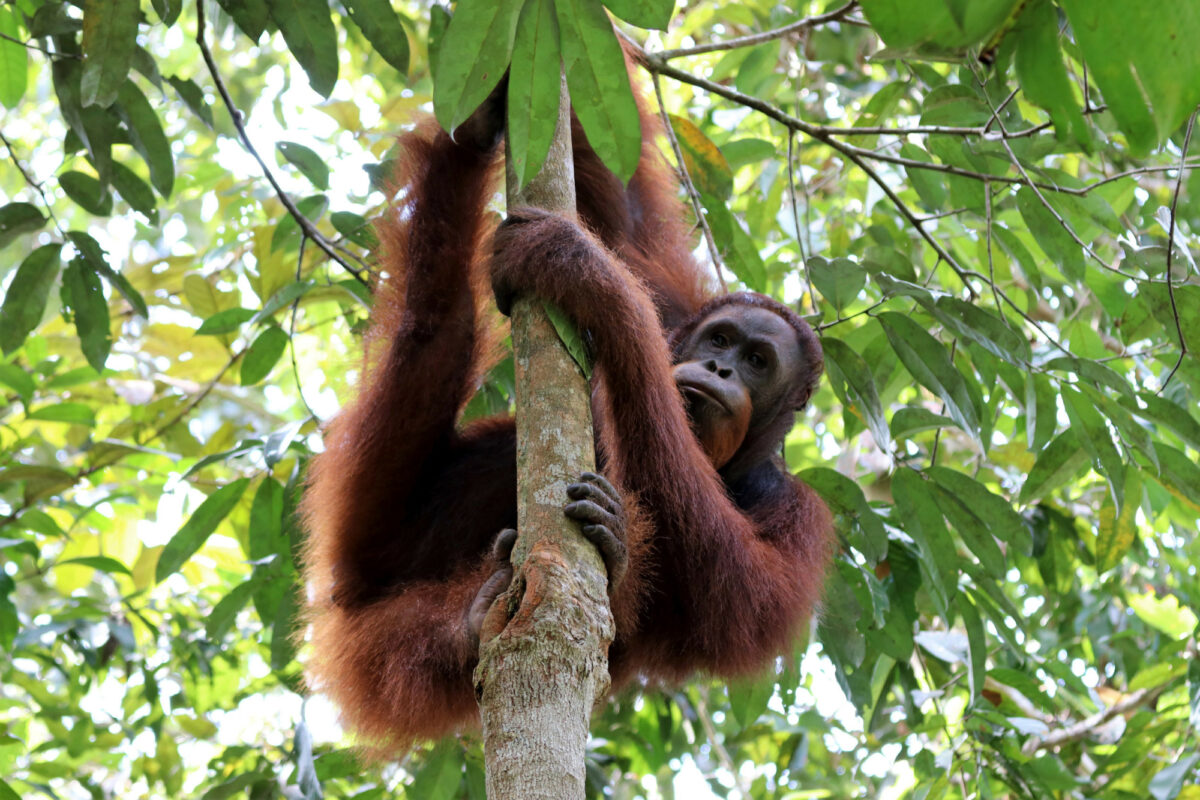Where To See Orangutans In Sarawak
Where to see orangutans in Sarawak
Sarawak together with Sabah makes up Malaysian Borneo — also known as East Malaysia. A river-threaded land, the state's 55 rivers provide a vital link between the coast and remote jungle interior, where both ethnic tribes and orangutans dwell in the wild.
The waterways constitute an incredible navigable network of 3,300km. For many of Sarawak’s predominant Iban tribe — fearsome former headhunters — rivers are still the only means of transport to their hinterland homes.
Iban longhouses dot the forested riversides way upriver, deep into the jungles. Some of those forests fall within the ‘Heart of Borneo’ conservation region, which is home to significant, though dwindling, populations of the orangutan.

Orangutan at Semenggoh Wildlife Centre
Where to see orangutans in Sarawak
Sarawak may not be Malaysian Borneo’s leading orangutan sighting state — with Sabah often stealing the limelight — but it offers authentic orangutan sighting adventures and off-the-beaten-track experiences that Sabah cannot match. This will allow you to escape the crowds, whilst still on the orangutan trail. The upriver trips in Sarawak are unparalleled for excitement and wonder, allowing visitors to encounter rare cultures and tribal life, as well as the chance of seeing the orangutan in the wild.
For those with less time on their hands, the Semenggoh Nature Reserve near Kuching is an easily-accessed home to a colony of semi-wild orangutans who are accustomed to human encounters.
Semenggoh Wildlife Centre
Just 20km south of state capital Kuching lies Sarawak’s first forest reserve. Established in 1920, Semenggoh became a rehabilitation centre for orangutans, honey bears and hornbills in 1975. Semi-wild orangutans live at the sanctuary, having graduated from the infant-oriented Matang Wildlife Centre west of Kuching. Visits revolve around feeding times (09:00-10:00 and 15:00-16:00), where you will see these playful and unpredictable creatures up close. Some come within an arm’s reach and may sit alongside you on the feeding platform, while others hang out further back in the trees.
The viewing area is a 1km walk from the entrance, where a series of graphic images warn of the dangers of inappropriate behaviour with the orangutans, such as goading them, teasing them with food, or just getting too close for comfort (the reserve’s forest trails have been closed since an orangutan attacked some staff in 2014). The reserve also has an Orangutan Museum where you will get some great insights into orangutan behaviour and conservation, as well as seeing the resident crocodiles. The reserve is also home to an arboretum and botanical research centre so you can wander among a lovely ethnobotanical garden with a wide variety of plants, as well as a fruit orchard, bamboo garden and pond with floating pavilion.
The centre opens between 08:00-10:00 and 14:00-16:00 for visitors and is easily accessible from Kuching, taking around 30 minutes by car, coach or taxi.

Silver leaf monkey in Borneo
Batang Ai National Park
Batang Ai National Park is the only place in Sarawak where you can spot orangutans in the wild and is also one of the least known destinations for doing so, thanks to its remote location.
As part of the region’s largest protected area for tropical rainforest conservation, this 240sq/km park — together with the Lanjak Entimau Wildlife Sanctuary in Malaysia and Indonesia’s Bentuang Karimun National Park — forms a near 10,000sq/km sanctuary for one of the few viable orangutan populations in Borneo alongside other endangered species. There are an estimated 1,000 orangutans in Batang Ai.
For conservation reasons, only part of the park is open to visitors. With the highest orangutan population density in central Borneo (1.7 animals per sq/km), the chances of seeing a wild orangutan here are good. However, sightings should be regarded as a bonus, not a guaranteed experience. Visitors also have the chance to see gibbons, langurs and hornbills, as well as engaging with the indigenous Iban community, who are fully involved in park conservation and management across Batang Ai. A nomadic community once infamous for headhunting, the tattoo-covered Iban make up 30% of Sarawak’s population and work in conjunction with the Sarawak Forest Commission to conserve the park. They are masters of the longboat and orangutan tracking.

A rafflesia flower
Getting there
The only way of getting to the orangutan zone in Batang Ai is on a multi-day tour, which normally includes travelling upriver on a longboat, staying in jungle camps or Iban longhouses and experiencing Iban culture. It’s important to choose a tour company that supports community efforts and is endorsed by orangutan charities.
Most tours begin with a four-hour drive from Kuching to Batang Ai reservoir, before transferring into a longboat and sailing over Batang Ai dam and into its tributaries. Jungle camps and longhouses are basic, but interacting with this once hidden tribe is fascinating. You’ll learn about their culture, how to forage for food and enjoy some local rice wine ahead of the adventure. Many visitors find this part of the trip enlightening.
Your orangutan safari will take you deep into the island's dense, steamy jungle in pursuit of sightings. This orangutan experience is physically demanding, with searing heat, high humidity, slippery conditions and the possibility of leeches — but the payoff is immense. Finding yourself in a region totally isolated from the outside world, with wild orangutans feeding and swinging from the trees is a magical experience.







